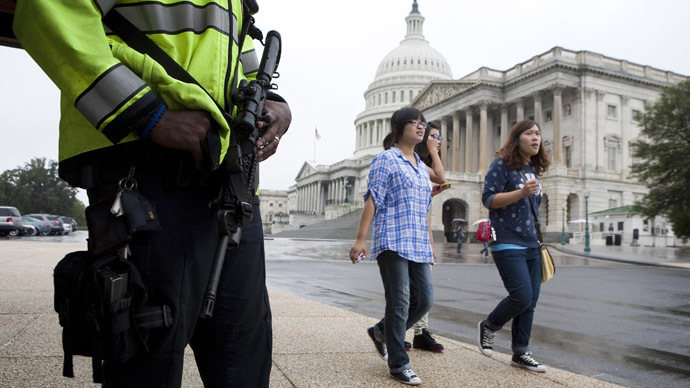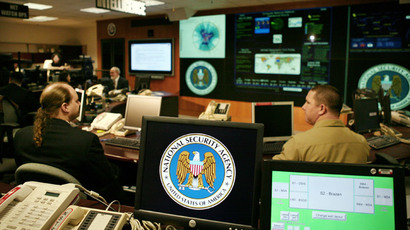American suicide bomber not tracked by US surveillance

In a startling admission, counterterrorism agencies said an American suicide bomber who made frequent trips to the Middle East was not under surveillance – and could not be unless there was an informant tipping them off to his activities.
Moner Mohammad Abusalha, a US citizen, made frequent trips to the
Middle East before taking his own life by driving 16 tons of
explosives into a restaurant used as check point by Syrian
soldiers on May 25, 2014. Despite taking several trips prior to
killing himself, the Florida-based, 22-year-old Abusalha was not
on the radar of the FBI or the database at the National
Counterterrorism Center.
FBI officials told the Washington Post that the Abusalha case
exposed vulnerabilities that can be reduced but not eliminated.
“It is extremely difficult for the FBI to identify
individuals in the US who have this kind of goal,” George
Piro, the special agent in charge of the FBI’s Miami field
office, said to the newspaper. “It requires a loved one or
really close friend to note the changes…The family has to
intervene.”
Piro is conducting the investigation into Abusalha’s activities,
but the case already reveals a weakness in US information
collection methods, despite a major push by security and
intelligence agencies over the past two years to track the flow
of foreign fighters into and out of Syria.
Read More:GCHQ more dangerous to privacy than NSA – Snowden
Abusalha first visited Syria in January 2013, then left for
Jordan and journeyed on to Mecca. He returned to the US in May
2013 while flying through Newark airport.
“If the FBI was looking for this person and had a case on
him, we absolutely would have notified the FBI,” said a US
Customs and Border Protection (USCBP) official.
Abusalha’s mother was called by USCBP about her son when he
arrived back in the US, and she confirmed he had been visiting
relatives in Jordan. She did not share with them whether she knew
anything about his visit to Syria.
His travel records showed multiple trips to Jordan dating to
2005, according to a senior Homeland Security official, though
there was no entry on him in any FBI or counterterrorism
databases. Nothing in his behavior or belongings, meanwhile,
betrayed any tie to the Syrian conflict.
Abusalha left the US again on November 2013 for a trip to
Istanbul and Cairo before carrying out his bombing in May 2014.
He is said to have joined the Al-Nusra Front, which has pledged
allegiance to Al-Qaeda.
The FBI remained unaware of Abusalha’s radicalization and return
to Syria until mid-December, when a source told the bureau about
his plan to fight for Al-Nusra. The bureau opened a full-blown
investigation and added Abusalha to its terrorism databases and,
eventually, to the US no-fly list.
In May 2014, in their final phone conversation, Abusalha’s mother
told him to stay in Syria and find a wife. His mother later said
she felt trapped, according to family members. If he stayed in
Syria, she knew he would be killed in battle or captured and
executed. But if she turned to the FBI, it would mean prison for
her son.
Read More:Homeland Security to scan federal computer networks without prior authorization
A video from the attack shows explosives being loaded onto an
armored truck, which is then driven down the road. A picture of
Abusalha appears on the upper right hand side, in which he is
holding a kitten with Arabic writing. Next is a long shot of a
village on a hillside, then a large explosion is shown for
several minutes and a zoomed-in shot shows people running up the
hillside.
There were other suicide bombs at army positions on the same day,
but no reports on how many died.
US counterterrorism officials are still questioning the
significance of Al-Qaeda’s decision to use Abusalha in an attack
on the forces of Syrian President Bashar al-Assad rather than
aiming him at a Western target.
Officials admit the total number of Americans who have visited
Syria, or tried to, has risen to 130 or more – and it includes
people about whom only fragments of information are known. Many
cases are incomplete based on false names or partial identities
assembled from social or US intelligence sources. Americans
account for a tiny fraction of the estimated 15,000 fighters who
have flocked to Syria from other nations – the majority are from
elsewhere in the Middle East, or from France, Britain and
Germany.
Read More:‘Core secrets’ exposed: NSA used undercover agents in foreign companies
US officials say the threat of domestic terrorists is challenging
to deal with because more than 250,000 Americans went in and out
of Turkey last year alone, and more than 2 million travelers
visit countries surrounding the conflict in Syria.
“Given the nature of the traveler threat, I don’t sit with
high confidence that I have complete visibility,” FBI
Director James B. Comey said in a briefing at FBI headquarters.
“Who are we missing who went and came back? And, obviously,
who are we missing who is in the midst of trying to go?”














